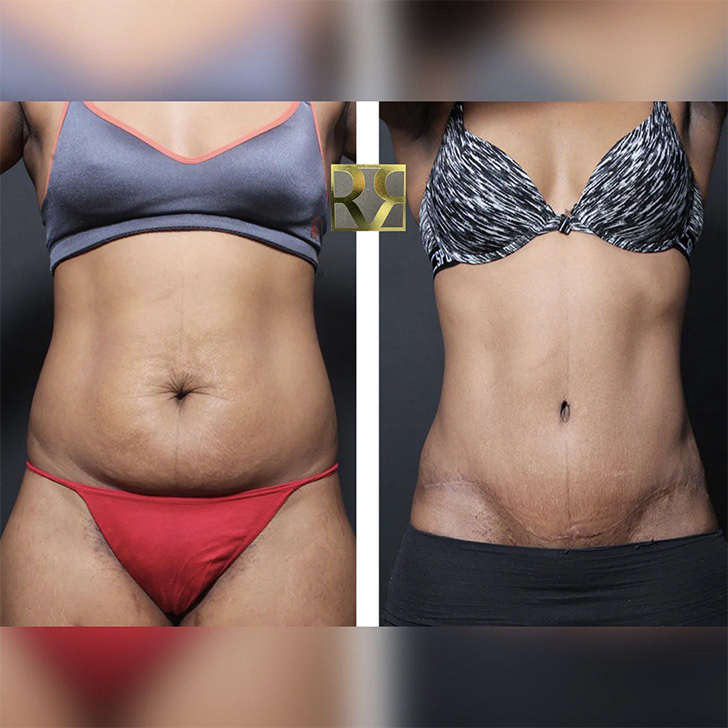Why the waist is so important to body contour
Regardless of what your body shape preference is, a narrower waist always seems to be desired. The hour-glass shape for women really transcends time and culture. Its true that at various points in time the level of curves considered desirable have varied from more accentuated (think Kim Kardashian) or less accentuated (roaring 20’s in the US), but some degree of an hour-glass figure is always desired. A boxy shape, where the hips, waist, and breasts are the same width, is not often desirable and that remains true whether we are talking plus size or very thin patients. A woman’s figure, if they are going for femininity, is all about curves and the hour-glass shape.
A narrower waist tends to make the person look like they are healthier and weigh less. in fact, recent studies have indicated that there is actual physiologic improvement after body contouring procedures to narrow the waist such as tummy tuck or liposuction. Even in patients that have had massive/complete weight loss, removing a couple of pounds of loose skin and narrowing the waist with a tummy tuck makes them look like they weigh far less. Below is an example of this phenomenon showing one of our patients who had very little weight of skin actually removed during a tummy tuck, but she appears like she weighs considerably less after waist narrowing.

So what are the ways that a patient can achieve a narrower waist?
Let’s break these items into things the patient can do vs. things that would have to be done by a plastic surgeon.
Things patient can do:
- Weight loss. There are two layers of fat in the abdomen. Extra-abdominal fat, between the skin and muscle and intra-abdominal fat that is on the organs. Calorie deficit works on reducing both layers but the intra-abdominal fat respond better to reducing foods that are absorbed quickly such as sugar, alcohol, simple carbohydrates, and processed foods.
- Waist trainer. Yes, they do work—to some extent. Some of this is from pressing on your organs making you feel full faster and resulting in eating less. Some of this is also the corset phenomenon where the cartilage in the lower ribs get molded with time like the photos we used to see of Victorian era ladies.
- Working out. This leads to increase calorie burn and so can help with running a calorie deficit to lose weight, but it can also help tone the abdominal muscles which supports and pulls the organs tighter in.
- Food modification. Like calorie deficit for weight loss but also to select foods that do not lead to bloating. Each person is different as to what foods can cause bloating but gluten and processed foods can be high on this list.
Things that require a plastic surgeon:
- Skin removal: Once skin loses its elasticity it must be tightened surgically. Pregnancy, weight loss, and other factors can result in loose skin around the waist. This loose skin detracts from the underlying contour of the body like a baggy t-shirt, making the waist appear boxy. Loose skin can also be present on the back of the waist and on the side of the waist. This loose skin often requires a Bra Line Back Lift ™.
- Muscle repair/tightening: Pregnancy as well as weight fluctuation can result in rectus diastasis (muscle separation) and/or global abdominal wall muscle laxity. When this occurs, the core is no longer as tight as it should be resulting in a wider waist on front profile and a rounder abdomen on side profile. Muscle repair/tightening is performed during a tummy tuck since access to the abdominal muscle wall is needed. This is usually done with sutures and results in permanent correction and improvement of both the side and front view profile of the waist. Increased intra-abdominal fat (visceral fat), as discussed above, is one thing that can limit how much muscle waist tightening can be performed. The “fuller” the inside of your abdomen is with intra-abdominal fat, the less the muscles can be brought in.
- Hernia repair: Like muscle repair, a hernia repair involves addressing a significant defect in the abdominal wall. A large hernia can result in general abdominal wall and waist widening, but it can also be more localized, creating a lump effect often around the umbilicus.
In addition to the above surgical procedures discussed, liposuction can also be a profoundly helpful method to narrow and sculpt the waist. This is true regardless of the weight and BMI of a patient. Genetically, weight loss resistant fat deposits can be in areas that make the waist look wider and generally take away from the hour-glass shape. It is because of this that liposuction is such an indispensable component of the plus size tummy tuck®. Patients with a high BMI and a high percentage body fat often accumulate this excess fat around the waist. Although removal of loose skin and muscle repair are important parts of the waist narrowing process of the plus size tummy tuck®, liposuction is integral not only to “de-bulk” the excess fat, but also to blend the contours of the now narrower waist into the surrounding body areas.
Stay tuned for a deeper dive on liposuction and its role in tummy tuck surgery with the next article post.
